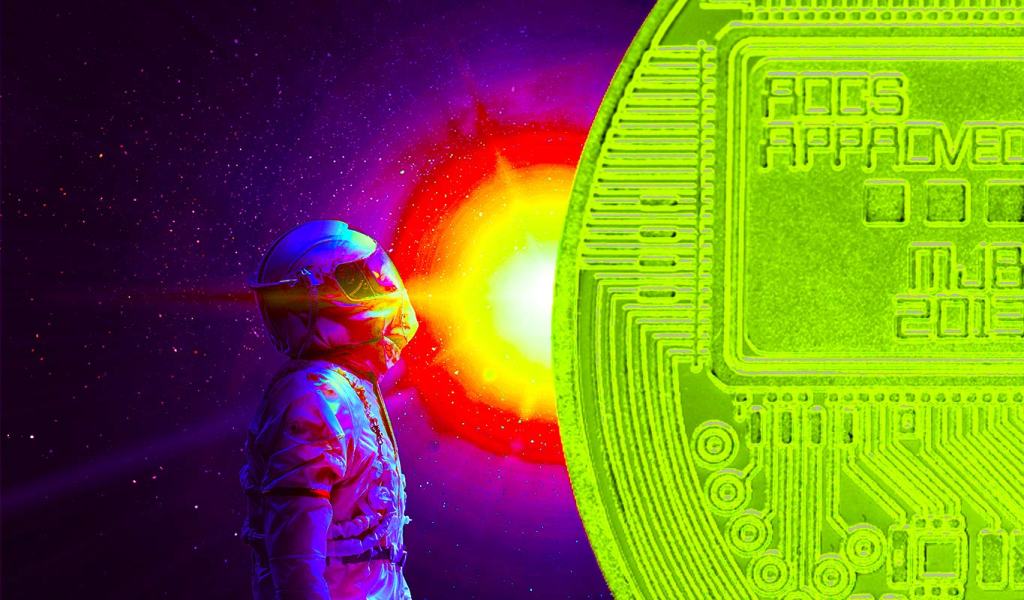
Blockchain Could Soar Beyond 100,000 Transactions per Second With the Right Math
HodlX Guest Post Submit Your Post
Some of the world’s most advanced distributed systems such as Halo 4, WhatsApp and LinkedIn arguably among global leaders in network design use a mathematical proof called the ‘actor model.’
Vast payment processing institutions like Visa and Mastercard use it too no doubt perking the ears up of every person who believes cryptocurrencies are a viable alternative to existing payment and remittance solutions.
Sharding is held as one of many holy grails in crypto because the division of a blockchain into several smaller networks aka shards unleashes the potential to holistically separate traffic, rather than dealing with vast volumes of transactions all at once in one place.
The actor model is irresistibly conducive to sharding in blockchain, with technical principles offering a natural fit to the goal of tremendous scalability.
Strictly speaking, the logic of this model does not break blockchain norms on its own but innovative engineering makes it entirely possible to scale to 100,000 TPS (transactions per second) using the underlying fundamentals.
These fundamentals provide a very modern model for distributed networks.
First-movers in tech often enjoy a significant advantage, and the same might prove true for engineers utilizing cleverly adapted mathematical proof for a massively scalable blockchain.
Why the actor model is so technically good
The actor model was first introduced by Carl Hewitt in 1973 and has since been successfully implemented, such as in the Akka library using the programming language Scala and the OTP (Open Telecom Platform) using Erlang.
If anything, this indicates a highly adaptable math proof.
We neither had the tools nor the conceptual vision to design modern DLT 40 years ago when Ericsson led the adoption of the actor model by deploying it as software on top of hardware routers.
Yet it’s entirely possible that this was the beginning of a quiet revolution ending with blockchain mass adoption, and finally, integration of the technology into our daily lives.
If this will be the case, it’s instructive to learn exactly how the actor model works. Even those without a solid mathematical or even computer science grounding can readily understand the unmistakable logic of applying it to blockchain.
The actor model states that an atom of computation is an ‘actor’ applied to blockchain simply meaning, the user account.
For the purposes of explanation, we will refer to the actor as an ‘account’ or in many cases, ‘smart contract.’ Within each account is a unique ID or wallet address and data and message handlers to transmit this data.
The role of the account allows it to receive messages, change its state and change its behavior (code) as well as spawn (deploy) other accounts.
Accounts are the basic unit of computation responsible for communicating, and therefore are responsible for determining how to process transactions. Accounts further retain their own private state in complete isolation from other accounts in a huge boon to the security and stability of the network.
Perhaps the biggest headline advantage is in the phenomenal scalability of a blockchain utilizing the actor model with it making full use of the multifaceted nature of accounts.
Neatly solving the scaling problem
Envisioning 100,000 TPS is difficult while computing them in a stable and secure manner is a mammoth task. And an account in this model is limited to sending up to 255 messages to other smart contracts, which on the surface implies a TPS limit of just a couple hundred.
Clever engineering, however, can overcome this boundary and surge past the limit.
By employing a recursive pattern of sending messages from a singular account to itself essentially repeatedly applying the messaging process the limit exponentially increases to the high tens of thousands, if not greater.
A single external message to any given smart contract may spawn an enormous number of follow-on messages all containing token transfers, NFT transfers or any other type of transaction on blockchain.
Within the actor model, developers are able to design and implement smart contracts without relinquishing control over the communication, and indeed coordination, between nodes in a decentralized network.
What this could mean is a tremendous leap forward in the CeFi versus DeFi debate.
A current challenge in the space is finding a workable tradeoff between decentralized principles and actually making sure the technology fulfills its promise often achieved by accepting there will be a centralized aspect and therefore a focal potential point of failure.
Everything changes once the actor model is implemented. Each account has a unique address deterministically calculated as a hash (stateInit), where stateInit denotes its initial data and contract data. This is all packed into a special tree-like data structure called, ‘TVM cell.’
Imagine a newly created account sending its first message. The initial message or transaction begins a chain that can exponentially grow according to the demands of dataflow with the result of exponentially increasing capacity.
Like a finite rhizome, a single account can meet multiples of other accounts on the blockchain and send transactions between one another. All with the goal of creating a massive scalable network able to handle, for example, the biggest NFT (non-fungible token) drop in history while simultaneously dealing with significant capital and information flow in traditional industries.
A secure and decentralized network is possible
On-chain deployment is heavily used in production systems composed of different smart contracts that need to communicate with each other.
Any smart contract built upon the actor model logic on such a blockchain so it accepts an external or internal message can start the process of sending transactions.
A special deploy message may be sent by an account containing the code and initial data, thereby triggering the on-chain deployment of a new smart contract.
A vastly scalable blockchain must ensure newly deployed factory contracts are set up in a way that ensures there is total concordance when it comes to code.
Otherwise, sections of the blockchain are exposed to security risks, and in the worst case scenario, fall victim to malicious actors coding smart contracts to act in a way they’re not supposed to.
Utilizing the actor model simply means that when a user registers, the new account will have to send messages to a smart contract. Otherwise, their account will be unable to deploy and become active.
This works to bring new accounts into line with every other account on the blockchain, thereby greatly reducing the risk of attackers engineering smart contracts to behave in unintended ways.
A set of rules for accounts in how they act with one another therefore delivers the ability to process innumerable volumes of transactions while handling failures gracefully and without ever posing a risk to the network.
The actor model has existed for several decades, quietly powering some of the world’s top distributed networks. But when applied to blockchain, it provides a structure for efficient concurrent computation that the industry is sorely missing.
Yet this does not solve every problem consensus and ultimately raw computational power require equally innovative solutions.
Christopher Louis Tsu is the CTO of the Venom Foundation blockchain and a veteran entrepreneur with 37 years in tech, during which he founded four start-up companies in EDA, electronic design automation tools, digital TV, satellite comms and medical biotech.
Follow Us on Twitter Facebook Telegram

Disclaimer: Opinions expressed at The Daily Hodl are not investment advice. Investors should do their due diligence before making any high-risk investments in Bitcoin, cryptocurrency or digital assets. Please be advised that your transfers and trades are at your own risk, and any loses you may incur are your responsibility. The Daily Hodl does not recommend the buying or selling of any cryptocurrencies or digital assets, nor is The Daily Hodl an investment advisor. Please note that The Daily Hodl participates in affiliate marketing.
Featured Image: Shutterstock/Sergey Nivens
The post Blockchain Could Soar Beyond 100,000 Transactions per Second With the Right Math appeared first on The Daily Hodl.
Go to Source
Author: Christopher Louis Tsu








